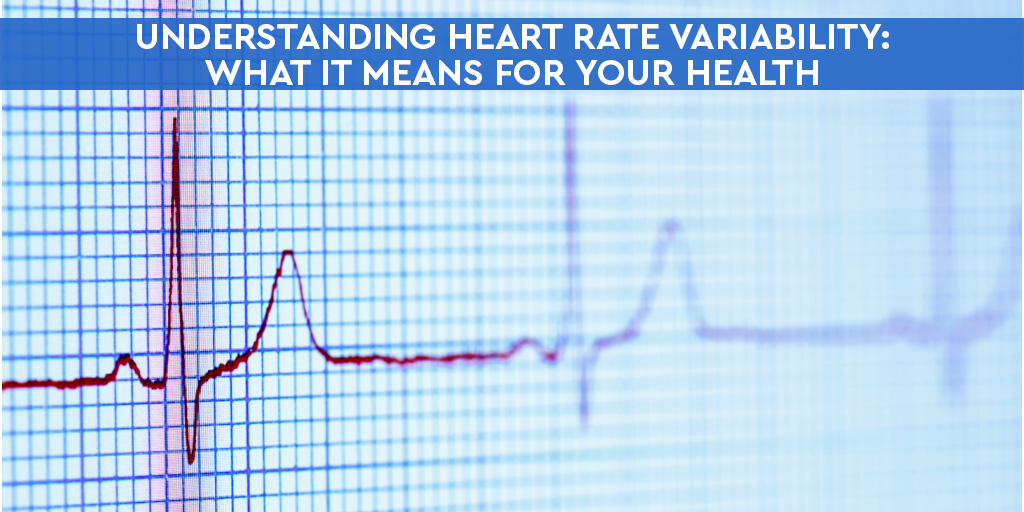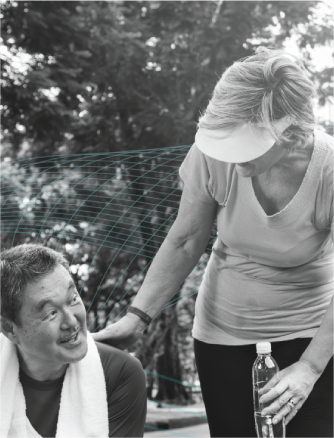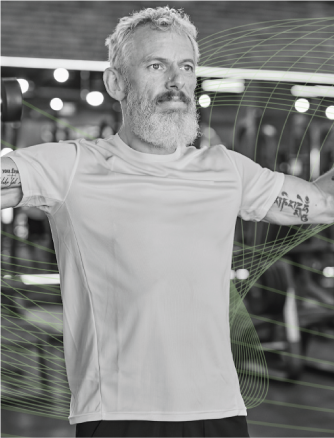Heart rate variability (HRV) has become a key metric in understanding your overall health, particularly for monitoring cardiovascular health and stress levels. HRV measures the variation in time between each heartbeat, reflecting how well your autonomic nervous system (ANS) is functioning. HRV can be an indicator of how your body is responding to various stresses and can provide valuable insights into your physical and mental health.
In this post, we’ll discuss what HRV is, good HRV, normal heart rate variability by age (average HRV by age), and how to interpret a heart rate variability chart for better health management. Whether you’re an athlete looking to optimize recovery or someone interested in reviewing a sleeping heart rate variability chart, understanding these patterns can help you make informed decisions about your wellness. We will also explore how Biotricity’s cutting-edge solutions, like Bioheart, can be leveraged by consumers for continuous HRV monitoring, providing accurate personal insights for better health management.
What is Heart Rate Variability (HRV)?
HRV is the variation in the time interval between successive heartbeats. Unlike a resting heart rate, which tends to be constant, HRV fluctuates constantly and is a direct indicator of the balance between the sympathetic nervous system (responsible for fight or flight responses) and the parasympathetic nervous system (responsible for relaxation and recovery).
A higher HRV, or good HRV, is often associated with good health, resilience, and a balanced nervous system. Conversely, a low HRV could indicate stress, fatigue, or even potential cardiovascular risk. Also, HRV is impacted by age.
To learn more about HRV, click here.
Heart Rate Variability: Normal Range by Age
HRV is not a one-size-fits-all number. It varies widely depending on factors like age, fitness level, and stress level. Understanding the normal heart rate variability by age is key to evaluating your own heart health.
Here’s a general breakdown of heart rate variability, normal range by age:
- Average HRV by age 18-25 years: A good HRV range is 60-90 milliseconds
- Average HRV by age 26-35: For young adults, good HRV range is from 50 to 85 milliseconds.
- Average HRV by age 36-45: As people age, HRV tends to decline. For adults in this age group, a good HRV range is 50-70 milliseconds.
- Average HRV by age 46-55: For adults in this age group, a good HRV range is 45-65 milliseconds
- Average HRV by age 55 and above: HRV typically decreases further, with a good HRV range of 25 to 65 milliseconds being common.
These are averages, and individual factors like physical activity levels, sleep quality, and overall stress can influence HRV. If you notice any significant drop in HRV over time, it may be a signal that your body is experiencing excessive stress or that recovery time is needed.
Higher HRV vs. Lower HRV: What Do These Mean?
- Higher HRV: A higher HRV typically indicates a healthy heart, good fitness level, and effective stress management. Individuals with a good HRV tend to recover quickly after physical exertion and stress and are less likely to suffer from cardiovascular problems.
- Low HRV: A low HRV can be a sign of stress, fatigue, poor sleep quality, or even cardiovascular disease. Chronic low HRV can indicate an imbalance in the ANS, meaning your body may not be able to efficiently manage stress or physical exertion.
Sleeping Heart Rate Variability: How Sleep Affects HRV
One of the most important times to measure HRV is during sleep. Sleeping HRV is a key indicator of recovery, as your body regenerates and restores during the night. If your sleeping HRV is low, it might indicate poor sleep quality or insufficient recovery.
While HRV during sleep tends to be higher when you’re in deep, restorative sleep, stress or fragmented sleep can result in lower HRV. Understanding how your HRV fluctuates during different sleep stages can help optimize your bedtime habits for better health outcomes.
Learn more about HRV, sleeping heart rate variability chart, and sleep here.
How to Interpret Your Heart Rate Variability Chart:
A heart rate variability chart and sleeping heart rate variability chart can help you visualize trends in your HRV over time. This chart will typically show a range of measurements over a set period, like days or weeks. By regularly monitoring your HRV, you can:
- Track your recovery: If you’re an athlete or engage in intense physical activities, tracking HRV will show you how well your body recovers between workouts.
- Monitor stress levels: Consistently low HRV could indicate high stress levels. Stress management practices like yoga, meditation, and deep breathing can improve HRV over time.
- Check sleep quality: As mentioned earlier, one of the most important times to measure HRV is during sleep. Your HRV while sleeping can give you insights into your rest quality.
How Biotricity’s Solutions Can Help with HRV Monitoring
Biotricity’s Bioheart is an advanced 3-lead continuous remote cardiac monitoring device that can be used to monitor HRV 24/7. Bioheart continuously tracks heart rate, rhythm, and variability, offering valuable insights into your HRV trends.
- Continuous Monitoring: With Bioheart, users receive continuous heart rate variability monitoring, allowing healthcare providers to assess the overall health and well-being of individuals or patients remotely. The device is designed to detect changes in heart rhythms, which may be a sign of potential issues, offering early intervention possibilities.
- Advanced Analytics: Bioheart also features advanced data analytics to track trends over time. This provides an opportunity for users to assess HRV trends, identify potential issues, and take proactive steps to improve heart health.
- Remote Monitoring: Through Biotricity’s telemedicine platform, Biocare, healthcare providers can access heart data, enabling them to review trends and provide insights. This is particularly beneficial for those with high-risk cardiovascular conditions or individuals looking to improve overall wellness.
- Wearable Comfort: Bioheart is designed to be comfortable and user-friendly, allowing individuals or patients to wear it for extended periods, similar to other wearable devices. The system is ideal for individuals or patients requiring long-term monitoring for continuous tracking.
By leveraging the power of Bioheart, users can benefit from HRV tracking data, which can be vital for monitoring recovery, managing stress, and improving overall heart health. For more information, click here.






